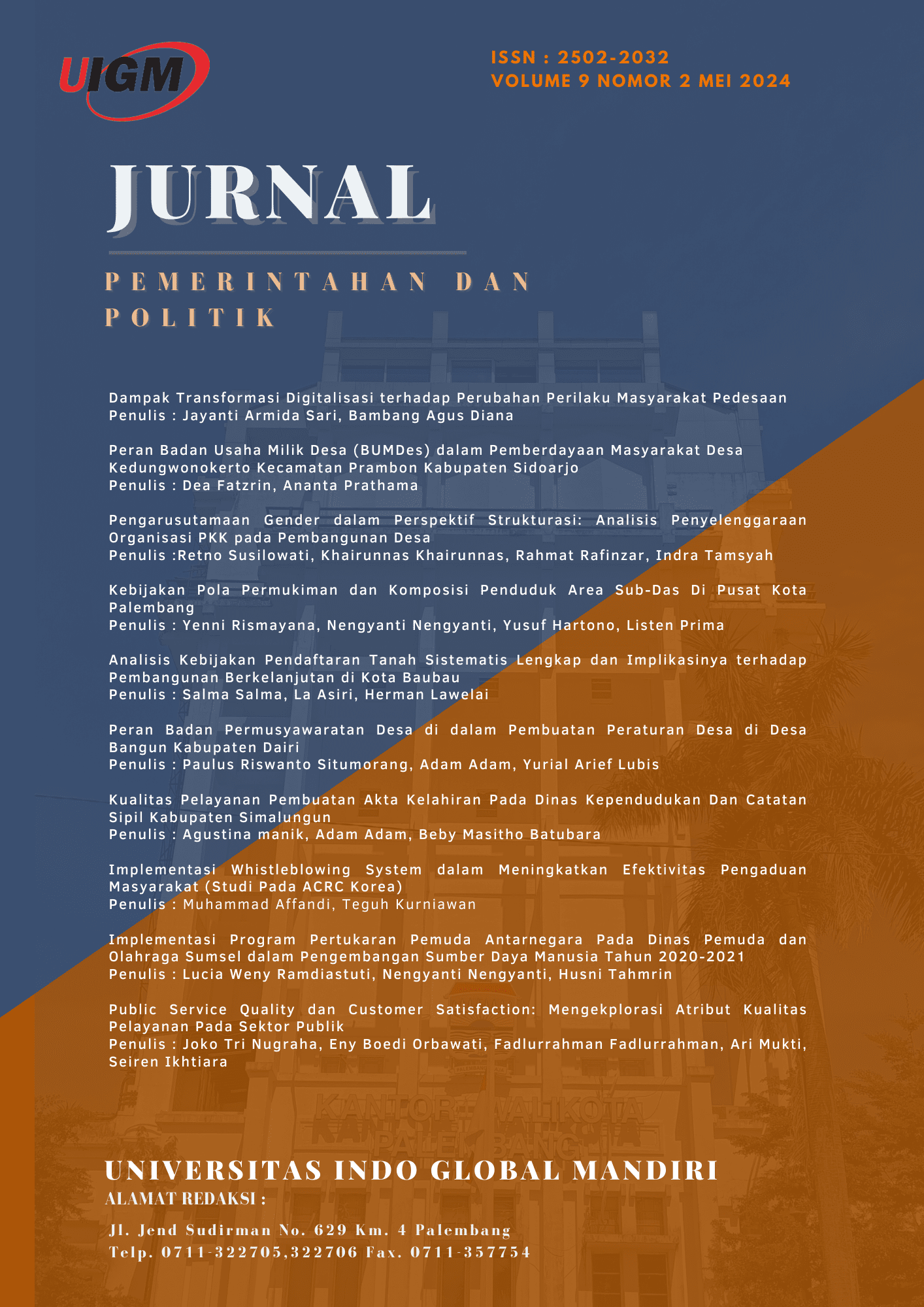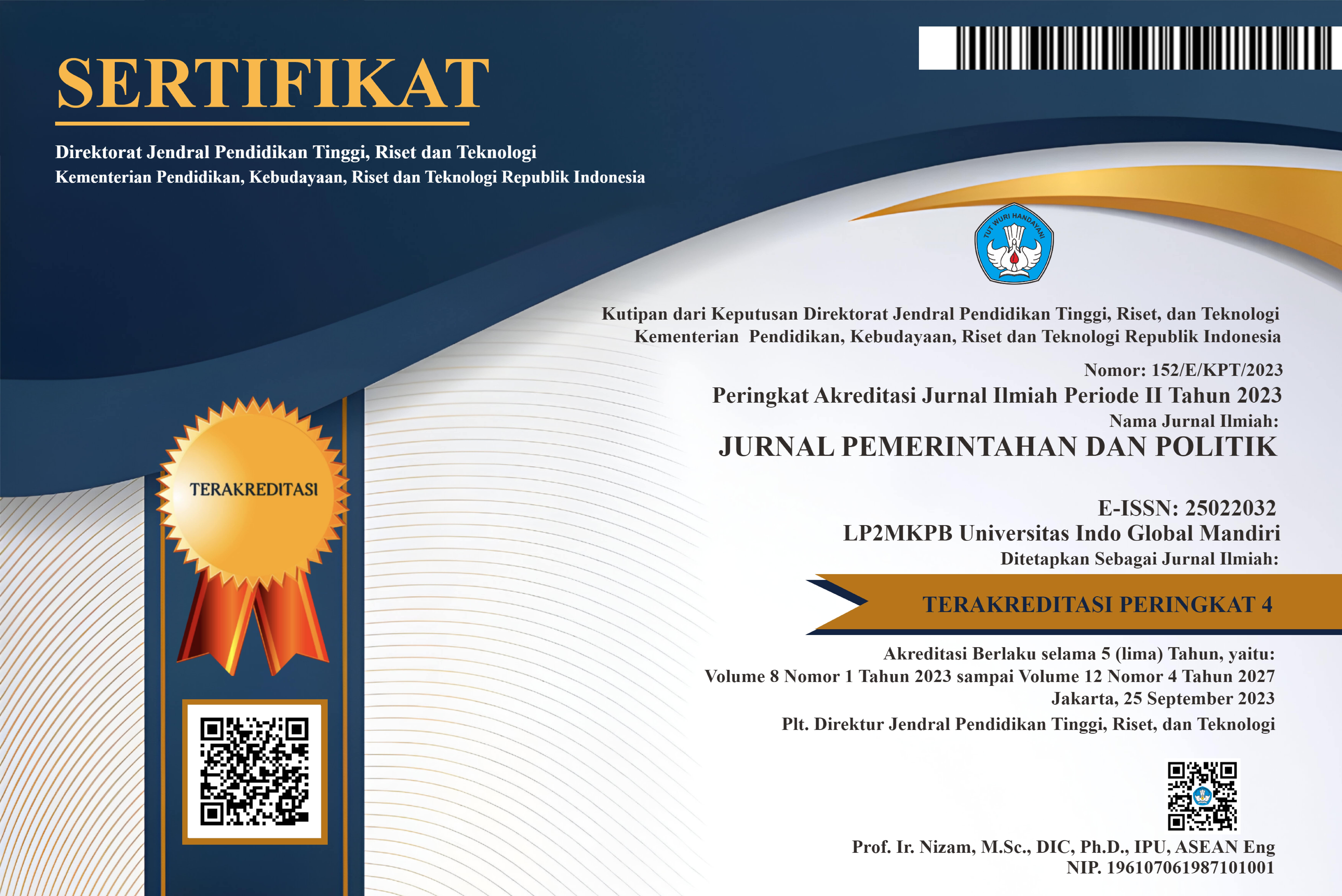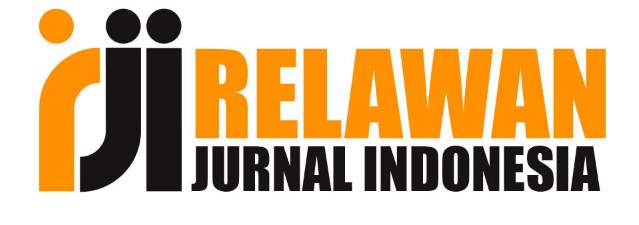Public Service Quality dan Customer Satisfaction: Mengekplorasi Atribut Kualitas Pelayanan Pada Sektor Publik
DOI:
https://doi.org/10.36982/jpg.v9i2.3653Keywords:
Public Service, Quality of Public Service, User SatisfactionAbstract
The quality of public services is the most important thing to know whether they are successful in fulfilling services. The quality of service reflects the quality of the bureaucracy. The objectives of the study include identifying weaknesses or shortcomings of public service delivery and measuring the tendency of public satisfaction level with public services. Using a survey method with 100 respondents. The analysis technique uses a descriptive statistic. The results showed that there are 3 dimensions of service that need to be improved, including: (1) The dimension of fairness of costs / tariffs in services; (2) The dimension of conformity of service products between those listed in the service standard and the results provided and (3) Dimensions of quality of facilities and infrastructure.
References
Agus, A., Barker, S. and Kandampully, J. (2007). “An exploratory study of service quality in the Malaysian public service sector”, International Journal of Quality and Reliability Management, Vol. 24 No. 2, pp. 177-190.
Bergman, B. and Klefsjo, B. (2010). Quality From Customer Needs to Customer Satisfaction, Studentlitteratur, Lund.
Bhuiyan, N. and Baghel, A. (2005). “An overview of continuous improvement: from the past to the present”, Management Decision, Vol. 43 No. 5, pp. 761-771.
Bigne´, E., Moliner, M.A., & Sa´nchez, J. (2003). Perceived quality and satisfaction in multi-service organisations: The case of Spanish public services. Journal of Service Marketing, 17(4), 420–442.
Brysland, A., & Curry, A. (2001). Service improvements in public service using SERVQUAL. Managing Service Quality, 11(6), 389–401.
Bryson, J., Sancino, A., Benington, J. and Sørensen, E. (2017). “Towards a multi-actor theory of public value co-creation”, Public Management Review, Vol. 19 No. 5, pp. 640-654, doi: 10.1080/14719037.2016.1192164.
Bryson, J.M., Barberg, B., Crosby, B.C. and Patton, M.Q. (2021). “Leading social transformations: creating public value and advancing the common good”, Journal of Change Management, Vol. 21 No. 2, pp. 180-202, doi:10.1080/14697017.2021.1917492.
Camillus, J.C. (2008). “Strategy as a wicked problem”, Harvard Business Review, Vol. 86 No. 5, pp. 98-106, available at: http://proxy.lib.chalmers.se/login?url5http://search.ebscohost.com/login.aspx?direct5true&db5buh&AN531730150&site5ehost-live&scope5site
Dabholkar, P.A., & Overby, J.W. (2005). Linking process and outcome to service quality and customer satisfaction evaluations: An investigation of real estate agent service. International Journal of Service Management, 16(1), 10–27.
Deming, W.E. (2000). Out of the Crisis, The MIT Press, Cambridge, MA.
Donnelly, M., Wisniewski, M., & Dalrymple, J.F. (1995). Measuring service quality in local government: The SERVQUAL approach. International Journal of Public Sector Management, 8(7), 15–20.
Elg, M., Wihlborg, E. and Ornerheim, M. (2017). “Public quality – for whom and how? Integrating public core values with quality management”, Total Quality Management and Business Excellence, Vol. 28 Nos 3-4, pp. 379-389, doi: 10.1080/14783363.2015.1087841.
Fundin, A., Bergquist, B., Eriksson, H. and Gremyr, I. (2018). “Challenges and propositions for research in quality management”, International Journal of Production Economics, Vol. 199, pp. 125-137.
Geuijen, K., Moore, M., Cederquist, A., Ronning, R. and van Twist, M. (2017). “Creating public value in global wicked problems”, Public Management Review, Vol. 19 No. 5, pp. 621-639, doi: 10.1080/14719037.2016.1192163.
Gutie´rrez, P., Va´zquez, J.L., Edwards, J.R. and Vaughan, D.R. (2009). “Quality dimensions in the public sector: municipal services and citizen’s perception”, International Review of Public and Non-Profit Marketing, Vol. 6 No. 1, pp. 75-90.
Hansen, M.B. (2011). “Antecedents of organizational innovation: the diffusion of new public management into Danish local government”, Public Administration, Vol. 89 No. 2, pp. 285-306.
Henrique, D.B. and Godinho Filho, M. (2020). “A systematic literature review of empirical research in Lean and Six Sigma in healthcare”, Total Quality Management and Business Excellence, Vol. 31 No 3-4, pp. 429-449, doi: 10.1080/14783363.2018.1429259.
Jevanesan, T., Antony, J., Rodgers, B. and Prashar, A. (2021). “Applications of continuous improvement methodologies in the voluntary sector: a systematic literature review”, Total Quality Management and Business Excellence, Vol. 32 No. 3, pp. 431-447, doi: 10.1080/14783363.2019.1588723.
Juran, J.M. (1962). “Quality control handbook”, Quality Control Handbook, McGraw-Hill.
Kerlinger, Fred, N. (1973). Foundation Of Behavioral Research, Second Edition, New York University, Holt Reinhart and Winston. Inc, New York.
Mwita, J.I. (2000). “Performance management model”, The International Journal of Public Sector Management, Vol. 13 No. 1, pp. 19-37.
Orbawati, Eny Boedi, Joko Tri Nugraha, Fadlurahman. (2023). Mengukur Indeks Kepuasan Masyarakat (Studi Kasus Pelayanan SKCK dan SIM Pada Polres Kota Magelang). Jurnal Pemerintahan dan Politik 8(1) Hal. 37-42.
Parasuraman, A., Zeithaml, V.A., & Berry, L.L. (1988). SERVQUAL: A multiple item scale for measuring consumer perceptions of service quality. Journal of Retailing, 64(1), 12–40.
Park, J. (2001). Performance evaluation: The case of customer satisfaction index. The Korea Public Administration Journal, 10(1), 40–66.
Powpaka, S. (1996). The role of outcome quality as a determinant of overall service quality in different categories of services industries: An empirical investigation. The Journal of Services Marketing, 10(2), 5–25.
Ra, H., & Park, H. (2001). Design and application of customer evaluation model on public service charter. Korean Society and Public Administration, 12(2), 77–98.
Seung-Kyu Rhee & June-Young Rha (2009) Public service quality and customer satisfaction: exploring the attributes of service quality in the public sector, The Service Industries Journal, 29:11, 1491-1512, DOI: 10.1080/02642060902793441
Singarimbun, Masri dan Sofian Efendi. 2006. Metode Penelitian Survai. Jakarta: LP3ES.
Sugiyono. (2006). Metode Penelitian Administrasi. Bandung: Alfabeta.
Sugiyono. (2008). Metode Penelitian Kuantitatif, Kualitatif, Riset dan Development (Edisi Revisi). Bandung: Alfabeta.
Suprianto, Bambang. (2023). Literature Review: Penerapan Teknologi Informasi dalam Meningkatkan Kualitas Pelayanan Publik. Jurnal Pemerintahan dan Politik, 8(2) Hal. 123-128.
Walker, R.M., Brewer, G.A., Boyne, G.A. and Avellaneda, C.N. (2011). “Market orientation and public service performance: new public management gone mad?”, Public Administration Review, Vol. 71 No. 5, pp. 707-717.
Wisniewski, M. (2001). Using SERVQUAL to assess customer satisfaction with public sector services. Managing Service Quality, 11(6), 380–388.
Zeithaml, Valarie A., A. P. and L. L. B. (1990). Delivering Quality Service. The Free Press.












